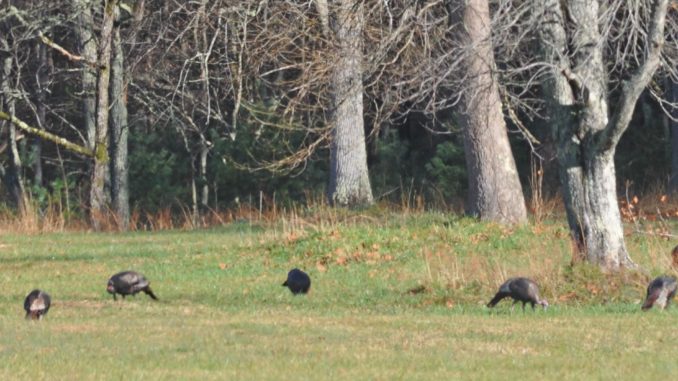
Hens had best success in Piedmont, but only still fair, NCWRC says.
The North Carolina Wildlife Resources Commission’s summer brood survey of nesting wild turkeys indicates that things didn’t really change much in 2011 from the previous year.
Statistics compiled from observations by 680 participants (biologists, wildlife enforcement officers, forest service staff and avid hunters) between July 1 and Aug. 31 indicate only fair reproductive success across North Carolina.
Evin Stanford, big-game project leader for the Commission, said the statewide ratio of poults per hen observed was 2.2, indicating fair overall productivity. Nesting success was rated “fair” because 59 percent of all hens observed had poults, with the ratio of poults to hens being 3.6, showing fair poult survival.
The 2.2 overall ratio was a slight improvement over 2010’s 2 poult/hen ratio.
“Our participants observed 32,877 wild turkeys this past summer,” Stanford said. “We collected the data and analyzed it to determine a productivity index from poult-per-hen ratios and to evaluate carryover of gobblers from gobbler-per-hen ratios.”
The best reproductive success was in the Piedmont, where observers found 59 percent of hens having poults, 3.9 poults per hen and an overall hatch ratio of 2.3 poults per hen.
The overall ratio in the mountains and coastal plain was 2 poults per hen, with 59 percent of hens having poults. The poult-per-hen ratio in the mountains was 3.3 and on the coast 3.5.
Stanford said observations of gobblers showed a slight increase in numbers. Over the past 10 years, the average has been .49 gobblers per hen observed, but last summer’s average was .51. Biologists consider a ratio of .50 to be acceptable; anything less indicates a possible decline in the population.
Click here to see a chart of the stats.
“These data indicated if quality spring gobbler hunting is to be maintained, additional pressure should not be placed on the male segment of the population by increasing season length, opening the spring season earlier or increasing the bag limit,” he said.
North Carolina hunters tagged 14,476 turkeys in 2011, a record harvest.



Be the first to comment